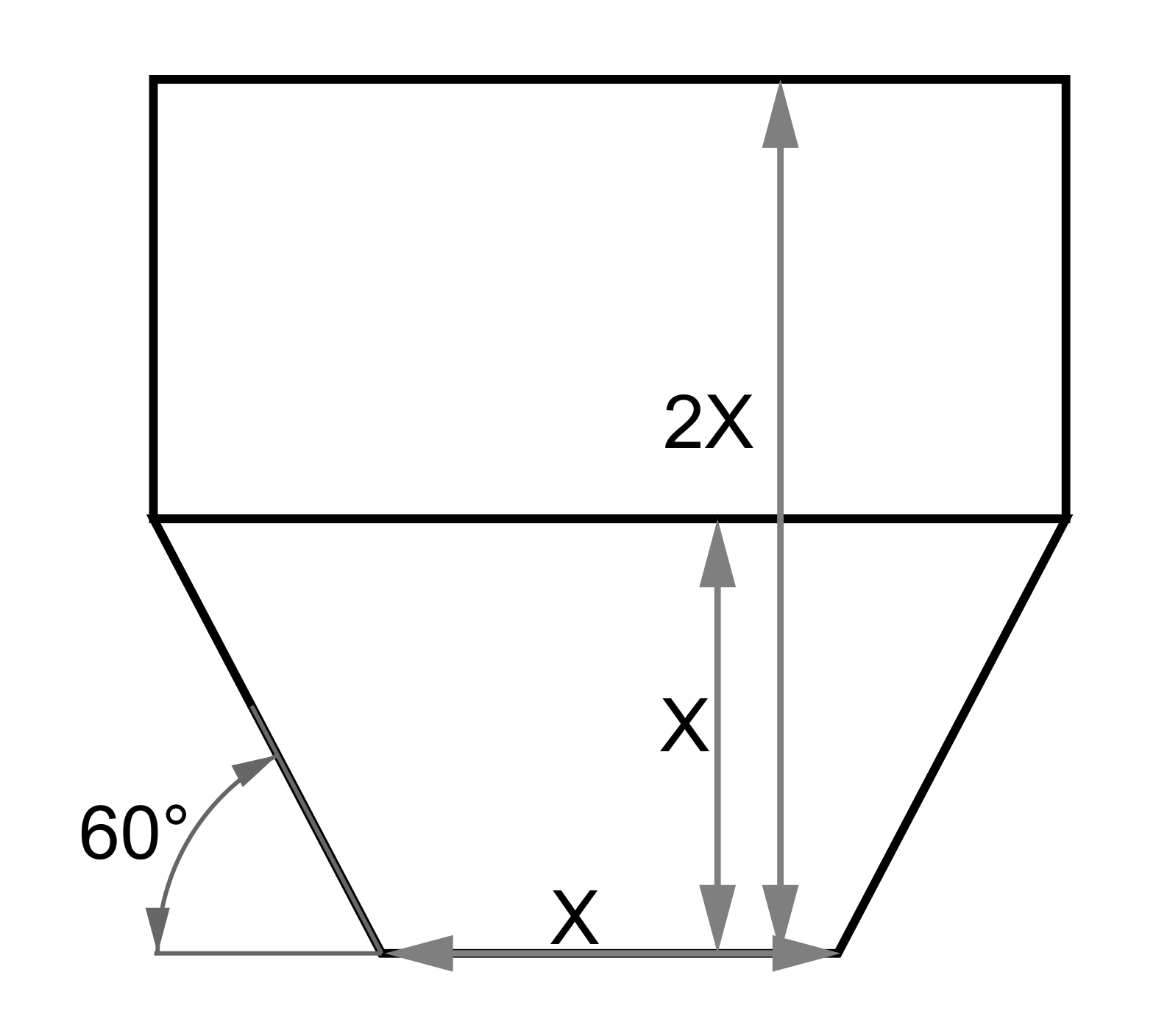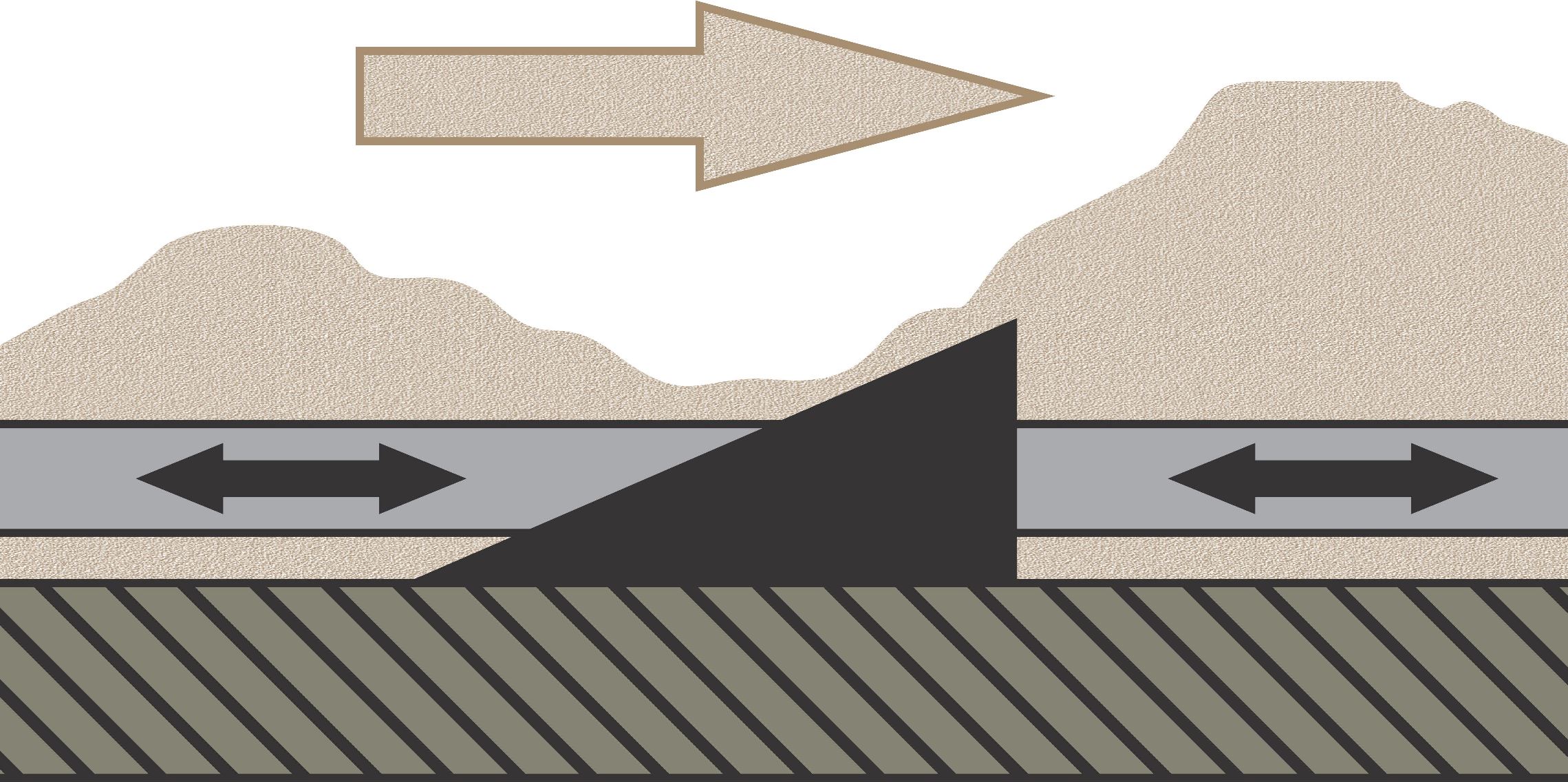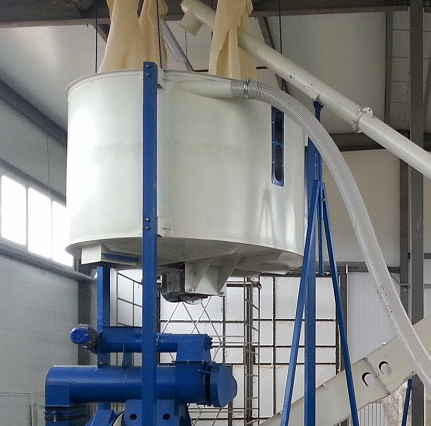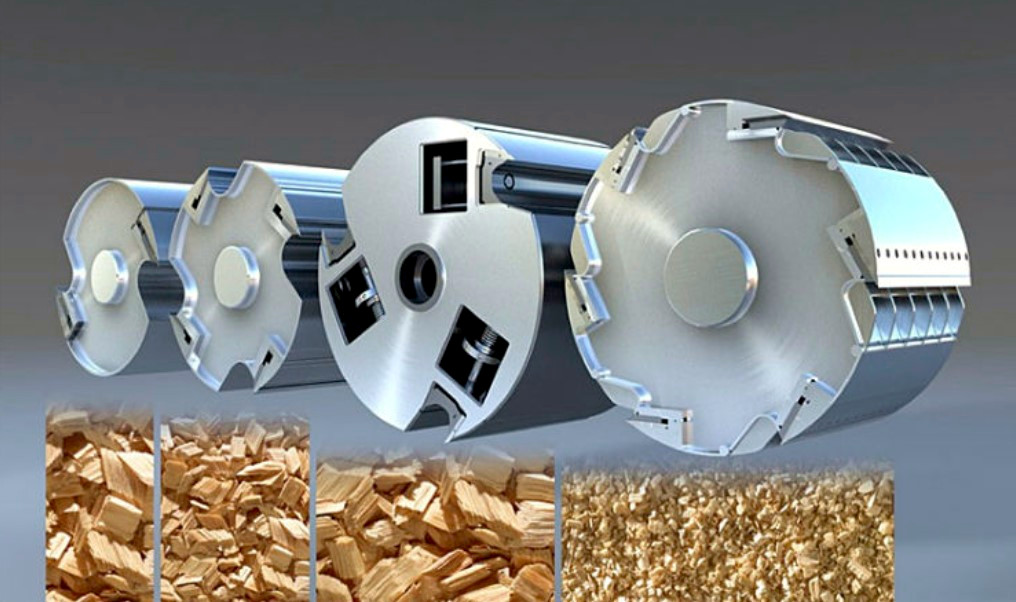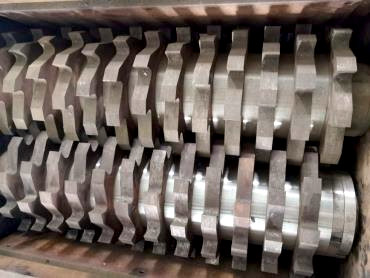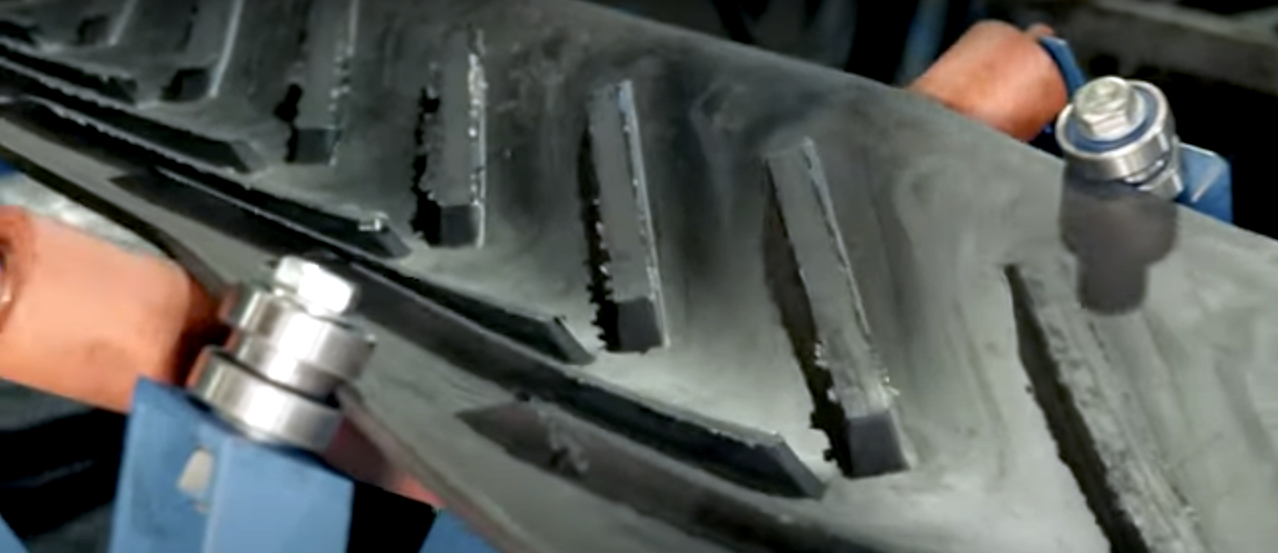The logistics of smaller diameter logs and typical logs are quite standard, similar to any wood processing plant: stacking in piles, feeding to a sorter equipped with a singulator, sometimes supplemented by an automated accounting system. However, storing waste is a more complex task, as the flowability and fraction vary significantly.
Regarding slab wood, as previously mentioned, it makes sense to transport and store it in its original form when it has sufficient thickness. In this form, it can be fed into the receiving conveyor of a chipper either by a manipulator or by manually dragging it off the feed table with pikes. Debarking slab wood is much more challenging and costly than debarking logs. Its uneven thickness and width prevent the effective use of high-performance cutters, and using de-barkers with anchor chain rotors is not feasible due to their low productivity. For example, to produce 1 ton per hour of pellets, 2-3 slabs of about 200mm in width need to be continuously fed into the chipper. This means that 3-4 chain debarking machines should work simultaneously, and a transport system split into three streams could cost more than the debarkers themselves. The significant content of bark in raw materials enhances strength and slightly increases calorific value, while how to address increased ash content will be discussed later in the section on raw material cleaning.
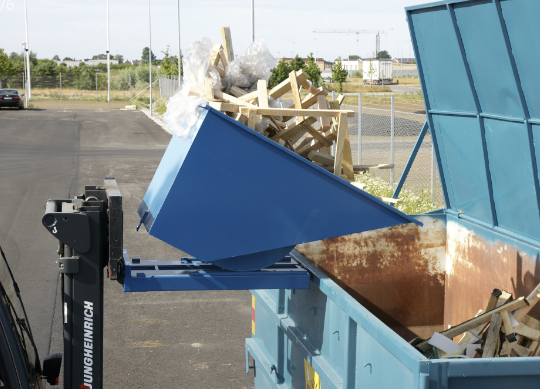 Cut-offs, blocks, and other short, thick offcuts usually accumulate near corresponding machines in tipping bins. These bins are designed such that the location of the center of gravity differs significantly when empty and when filled. This allows them to be moved and unloaded using a regular forklift. If such waste is not carried away by a single conveyor to a general shredder, these bins help eliminate manual labor for transferring. In principle, the share of cut-offs in the total volume is quite small, and they are either sold as firewood to the local population or fed along with slab wood into the chipper. It's crucial to place the blocks on top of the slab wood to prevent material feeding from clogging at the chipper's entrance.
Cut-offs, blocks, and other short, thick offcuts usually accumulate near corresponding machines in tipping bins. These bins are designed such that the location of the center of gravity differs significantly when empty and when filled. This allows them to be moved and unloaded using a regular forklift. If such waste is not carried away by a single conveyor to a general shredder, these bins help eliminate manual labor for transferring. In principle, the share of cut-offs in the total volume is quite small, and they are either sold as firewood to the local population or fed along with slab wood into the chipper. It's crucial to place the blocks on top of the slab wood to prevent material feeding from clogging at the chipper's entrance.
For organizing the grinding of cut-offs, a conveyor and a receiving hopper are added to the shredder, with an inclined bottom equipped with a vibrator. The exit window usually extends the length of the hopper and is at least 500mm high. Discharge typically occurs onto a horizontal vibrating conveyor, which helps dose the raw material, and then onto an inclined belt conveyor that feeds chunks into the shredder. If space allows, a belt conveyor with a regular rubber belt and an ascent angle of no more than 20° is used. For steeper angles, a PVC belt with cleats is used. The conveyor should have sides at least 300mm high to prevent material from falling onto personnel. The sides should overlap in the direction of movement to prevent offcuts from catching on edges and creating blockages. If an enclosed conveyor is needed, the cover should be positioned at a height equal to the maximum possible length of the pieces. Material jamming can ruin an expensive belt within minutes and lead to an emergency.
Sheet and large-sized materials are usually stored in piles and fed onto a horizontal conveyor using a forklift or grapple. A particular challenge in processing pallets or sheet wood material is that sometimes it's more cost-effective to use a circular saw and an inclined conveyor that dumps one half onto the other, allowing for the use of a shredder with an intake width of just 500-600mm. This saves equipment procurement costs and optimizes loading during grinding, but is applicable only to drum shredders with horizontal feed.
An interesting result was obtained for storing straw rolls packed in film. Considering the return of the used packaging to the manufacturer for recycling, the storage cost over 10 years is comparable to building a covered warehouse. Simultaneously, the airtight packaging completely removes concerns about warehouse space limitations, as storage can be organized in any convenient location, even along the edges of hay fields. For pellet production, this means the plant can operate year-round without using a drying complex.



